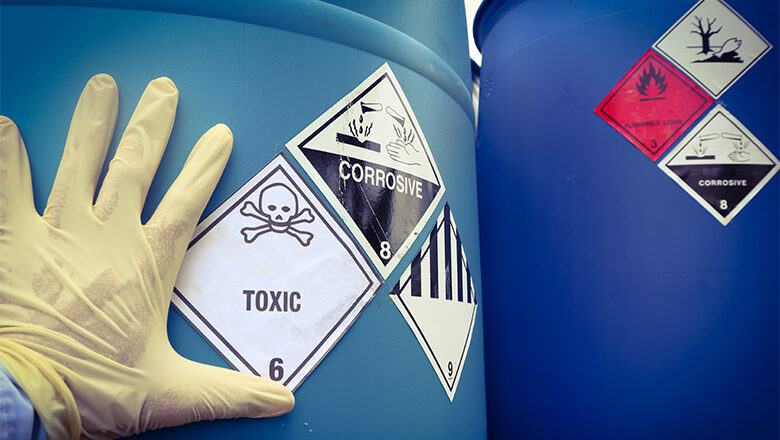Hazard Communication
- Description
- Curriculum
- Reviews
Hazard Communication Training program, designed and developed by EHS-Global to empower organizations with the knowledge and tools required to ensure a safe workplace.
This comprehensive course focuses on the essential components of OSHA’s Hazard Communication Standard (HCS), a cornerstone of workplace safety aimed at preventing chemical-related injuries and illnesses. Whether you’re an employer, manager, supervisor, or employee, this training equips you with the skills to identify, communicate, and mitigate chemical hazards effectively.
Throughout this course, you will learn how to develop and implement a robust hazard communication program that includes:
- Proper chemical labeling and Safety Data Sheet (SDS) management.
- Employee training on handling hazardous chemicals.
- Strategies for program evaluation and continuous improvement.
By completing this course, you’ll gain the knowledge necessary to foster a safety-conscious culture and ensure compliance with OSHA standards. Together, let’s create safer workplaces and protect employees from unnecessary risks.
-
1What is Hazard Communication?20 Minutes
Hazard Communication Introduction
-
2Importance of Hazard Communication in Workplace Safety20 MinutesThis lesson is locked because you haven't completed the previous one yet. Finish the previous lesson to unlock this one.
Importance of Hazard Communication
-
3The Evolution of OSHA’s HCS and Alignment with GHS (Globally Harmonized System)20 MinutesThis lesson is locked because you haven't completed the previous one yet. Finish the previous lesson to unlock this one.
The Evolution of GHS
-
4Key Terms: Hazardous Chemicals, Routes of Exposure, and Health Risks20 MinutesThis lesson is locked because you haven't completed the previous one yet. Finish the previous lesson to unlock this one.
key Terms Of Hzard Communication
-
5Learning the Standard: Responsibilities and Regulatory Overview20 MinutesThis lesson is locked because you haven't completed the previous one yet. Finish the previous lesson to unlock this one.
Responsibilities and Regulatory Overview
-
6Developing a Written Hazard Communication Program20 MinutesThis lesson is locked because you haven't completed the previous one yet. Finish the previous lesson to unlock this one.
Written Hazard Communication Program
-
7Labeling Chemical Containers: Workplace vs. Supplier Labels10 MinutesThis lesson is locked because you haven't completed the previous one yet. Finish the previous lesson to unlock this one.
Workplace vs. Supplier Labels
-
8Maintaining Safety Data Sheets (SDS): Access and Updates20 MinutesThis lesson is locked because you haven't completed the previous one yet. Finish the previous lesson to unlock this one.
Access and Updates
-
9Training Employees: Ensuring Comprehensive Knowledge20 MinutesThis lesson is locked because you haven't completed the previous one yet. Finish the previous lesson to unlock this one.
Ensuring Comprehensive Knowledge
-
10Periodic Program Evaluation: Sustaining Effectiveness20 MinutesThis lesson is locked because you haven't completed the previous one yet. Finish the previous lesson to unlock this one.
Sustaining Effectiveness
-
11Mandatory Labeling Elements20 MinutesThis lesson is locked because you haven't completed the previous one yet. Finish the previous lesson to unlock this one.
Mandatory Labeling Elements
-
12Understanding OSHA and GHS Pictograms20 MinutesThis lesson is locked because you haven't completed the previous one yet. Finish the previous lesson to unlock this one.
Understanding OSHA and GHS Pictograms
-
13Differences Between Workplace Labels and Shipping Labels20 MinutesThis lesson is locked because you haven't completed the previous one yet. Finish the previous lesson to unlock this one.
-
14The Role of SDS in Hazard Communication20 MinutesThis lesson is locked because you haven't completed the previous one yet. Finish the previous lesson to unlock this one.
The Role of SDS in Hazard Communication
-
15Breakdown of SDS Sections30 MinutesThis lesson is locked because you haven't completed the previous one yet. Finish the previous lesson to unlock this one.
Breakdown of SDS Sections
-
16Ensuring Accessibility for Employees20 MinutesThis lesson is locked because you haven't completed the previous one yet. Finish the previous lesson to unlock this one.
Ensuring employees have proper access to hazard communication materials, such as labels and Safety Data Sheets (SDS), is critical to maintaining workplace safety and compliance with OSHA's Hazard Communication Standard (HCS). Accessible hazard information empowers employees to take informed precautions and reduces workplace risks associated with hazardous chemicals.
-
17Components of Effective Employee Training Programs20 MinutesThis lesson is locked because you haven't completed the previous one yet. Finish the previous lesson to unlock this one.
Training employees effectively on hazard communication requires a structured program addressing specific components to ensure safety and compliance with OSHA standards.
-
18Delivering Training in Multilingual Work Environments30 MinutesThis lesson is locked because you haven't completed the previous one yet. Finish the previous lesson to unlock this one.
Training in multilingual work environments presents unique challenges, but it is essential for ensuring worker comprehension and workplace safety.
-
19Examples of Interactive and Comprehensive Training Methods30 MinutesThis lesson is locked because you haven't completed the previous one yet. Finish the previous lesson to unlock this one.
Interactive training methods enhance employee understanding of the Hazard Communication Standard (HCS) by fostering engagement and practical application.
-
20Evaluating Current Program Effectiveness30 MinutesThis lesson is locked because you haven't completed the previous one yet. Finish the previous lesson to unlock this one.
Evaluating the effectiveness of a hazard communication program is an essential step to ensure that the program continues to meet its objectives and aligns with workplace safety standards.
-
21Gathering Employee Feedback and Incorporating Changes30 MinutesThis lesson is locked because you haven't completed the previous one yet. Finish the previous lesson to unlock this one.
Incorporating employee feedback into hazard communication programs is a critical step in ensuring effectiveness and compliance. This process helps identify gaps in training, materials, and program implementation, enabling continuous improvement.
-
22Adapting to New Hazards and Regulations30 MinutesThis lesson is locked because you haven't completed the previous one yet. Finish the previous lesson to unlock this one.
Adapting to emerging hazards and evolving regulations is a critical aspect of maintaining an effective hazard communication program

Popular Courses
Archive
Working hours
| Monday | 9:30 am - 6.00 pm |
| Tuesday | 9:30 am - 6.00 pm |
| Wednesday | 9:30 am - 6.00 pm |
| Thursday | 9:30 am - 6.00 pm |
| Friday | 9:30 am - 5.00 pm |
| Saturday | Closed |
| Sunday | Closed |









